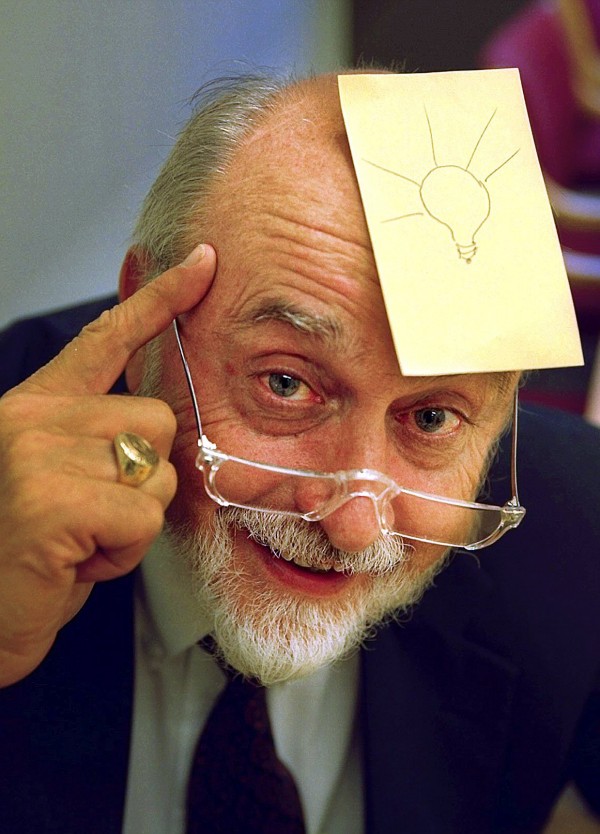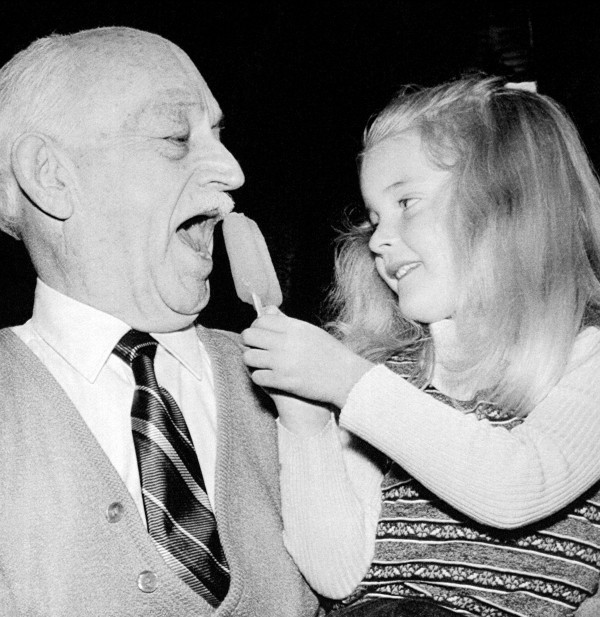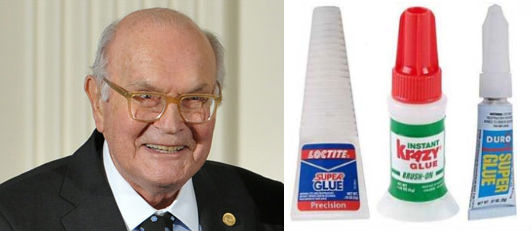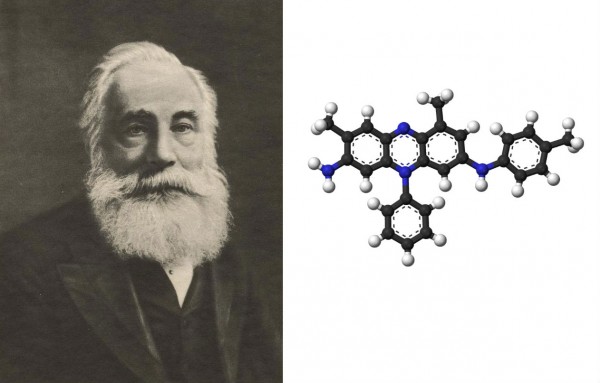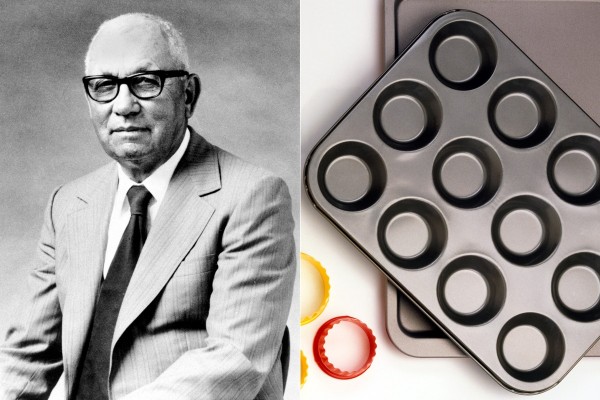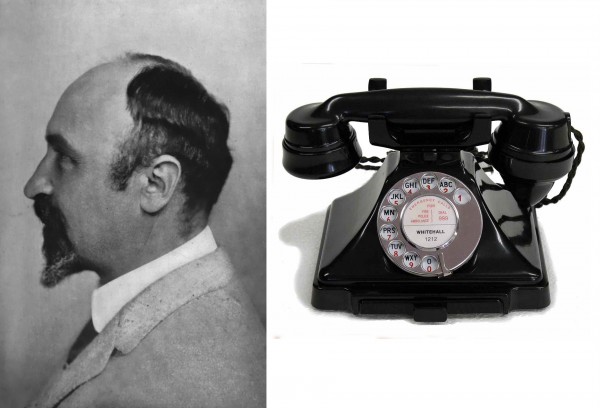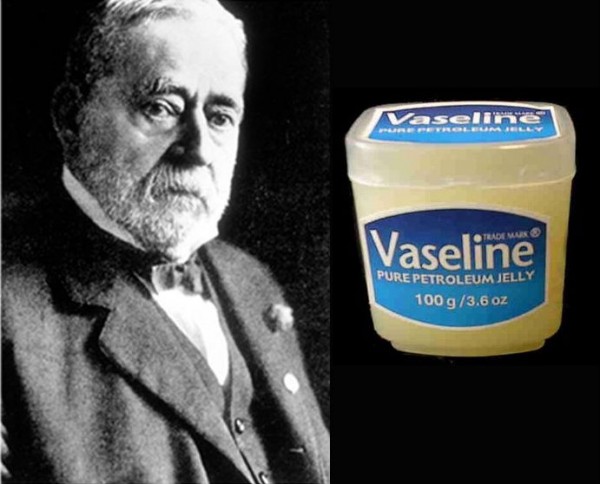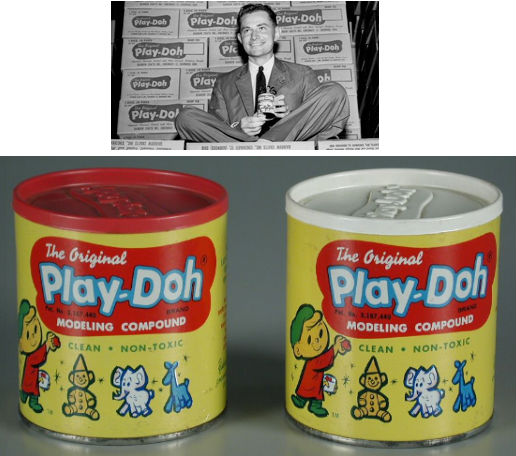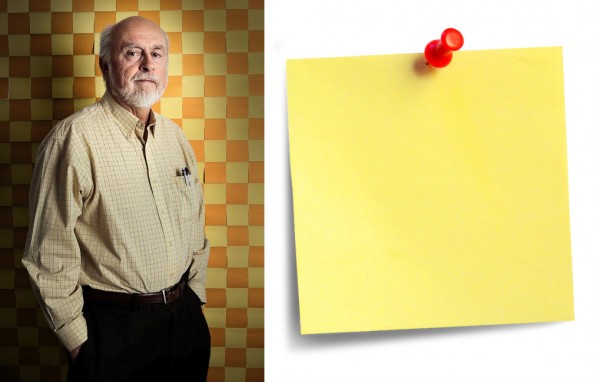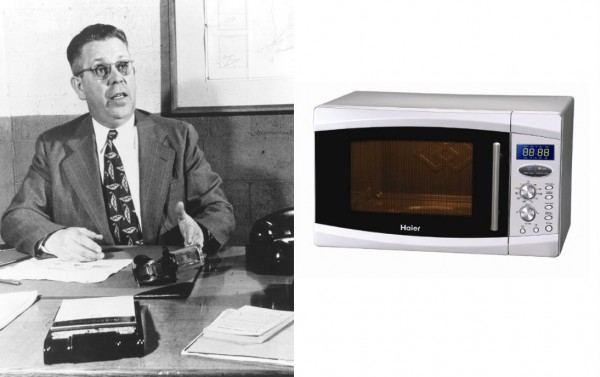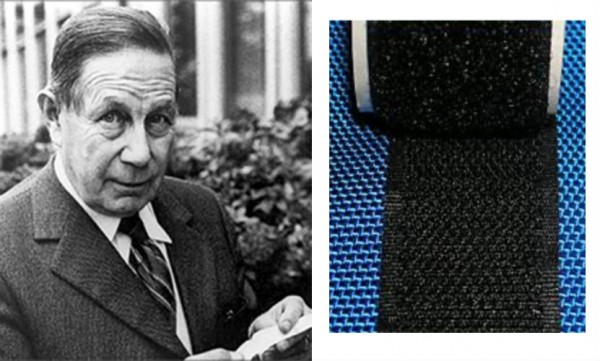Thanks to American Express OPEN for making this article possible as part of the Big Break for Small Business program. Visit FaceBook.com to learn more about the Big Break contest. Enter your small business for a chance to win a trip to Facebook headquarters for a one-on-one business makeover and $20,000 to grow your business with social media. See Official Rules for complete details.
Everyone who’s been successful knows that more often than not the success comes down to a combination of hard work and luck. Ideas and skill are important too. But ultimately it’s the people who increase their chances of success through perseverance and hard work who are successful. Of course there are some people who owe their success more to luck than anything else (and we’ll look at ten of those people later in this article). The fact is we’re always going to have to let some of the puzzle pieces fall into place. We can’t micromanage the world. We can’t perfectly execute every detail down to the sub-atomic level of reality. What we can do as business people, is to create the best possible set of circumstances to achieve our goals, and then to let luck work itself out from there.
When I started out my online business I didn’t know what I was doing. I had some technical skills and I had a dream: to work for myself. I took a lot of stabs in the dark. The learning curve was steep. And I failed a whole lot. But I persevered and learned what works and what doesn’t work. The perseverance allowed me to learn how to improve my chances of “getting lucky.” And eventually I got “lucky” with a few small successes. And then duplicated the “luck” a few times and got even more lucky. It turns out that in business, “luck” can be controlled.
Because of the huge respect I have for the “luck” aspect of success, I decided it would be fun for BusinessPundit to put together a list of accidental discoveries that made people rich. And here’s that article:
Sometimes the most lucrative business discoveries come about by sheer chance. Here we bring together ten resourceful men whose incidental discoveries are a template for budding entrepreneurs looking to make a quick buck. While these finds may have come about by accident, it is no coincidence that they went on to generate huge profits. Each discovery exemplifies how with ingenuity, prudent investment in R&D and a bit of good fortune, companies and individuals can make billions. Most of these discoveries found many applications, which, with some skillful marketing, were able to take the world by storm. They offer valuable lessons in business that can help anyone to start a company.
10. Frank Epperson – Popsicle
Eleven-year-old Frank Epperson became part of American folk lore when on a cold winter’s night in 1905 he left a mixture of soda powder and water on his porch with a stirring stick inside the glass. He had unknowingly created the ice lollipop. But it was not until 18 years later, in 1923, while running a lemonade stand that he began to produce his frozen treats under the name ‘Eppsicles.’ Later the name was changed and by 1924 he had patented the ice lollipop and founded the Popsicle Corporation. The following year, he set up royalty arrangements with the Joe Lowe Corporation and sold his patent. By 1928 Epperson had received royalties on more than 60 million Popsicle sales. The year of his death in 1983, Unilever paid $155 million to Empire of Carolina Inc. for the Popsicle brand.
9. Harry Coover – Super Glue
At the height of WW2, American chemist Harry Coover and his research team at Eastman Kodak set out to make clear plastic gun sights using the highly adhesive chemical cyanoacrylate. They failed and instead were stuck with Super Glue. The idea took hold and by 1958 superglue was sold as a commercial product, while under Dr Coover’s direction the R&D team at Kodak helped introduce 320 new products, resulting in a $1.8 billion to $2.5 billion sales growth. However, the company was never able to fully capitalize on his discovery after it sold the business to National Starch in 1980. Dr Coover also developed the glue for medical use and during the Vietnam War it was used as an aersol treatment for wounded soldiers. Today it has applications in surgery and to stop bleeding ulcers. Dr Coover was awarded the National Medal of Technology and Innovation by Barack Obama in 2010 and by the time of his death last month, he held 460 patents.
8. William Henry Perkin – Mauveine
English chemist William Henry Perkin was just 18 when in 1856 he stumbled upon the synthetic dye mauveine while trying to produce a medicine for malaria. He quickly patented the process and the following year built the world’s first organic chemical factory at Greenford Green, near London. The dye proved immensely popular and was considered the height of fashion when Queen Victoria wore a mauve silk gown at the Royal Exhibition in 1862. By the late 1860s the dye, also known as aniline purple, had lost its appeal, but Perkin had already made his fortune. Soon after he turned 36, he sold his factory and was able to live off the profits and buy a much bigger home laboratory where he devoted himself to research.
7. Roy Plunkett – Teflon
American researcher Roy Plunkett was experimenting with gases for Freon refrigerants for Dupont in 1938 when he inadvertently left a sample out overnight. By morning, it had frozen to a whitish wax. But rather than consign the lump to the trash, he tested it to discover some of its very unusual properties. By 1945 it was trademarked as Teflon and Dupont managed to find a wealth of applications for its latest profit maker, from kitchenware to cable insulation. Plunkett stayed with the company and at the time of his retirement in 1975, he was director of operations for Freon products. Teflon has since earned billions for Dupont. It goes to show how prudent investment in R&D, combined with a spot of luck, can help businesses generate mass profits.
6. Leo Hendrik Baekeland – Bakelite
Belgian chemist Leo Baekeland became the patriarch of the plastics when in 1907 he developed the polymer Bakelite, used in radios telephones and kitchenware. He had been searching for a replacement for shellac, a varnish for coating and preserving wood products. When he thought he had come close, he heated his shellac-like substance in an iron pressure cooker, his “bakelizer”. With that, plastic was born and in 1910 Baekeland founded the General Bakelite Company. The plastic was marketed as “the material of a thousand uses,” and it comes as no surprise that his discovery drew imitations, leading Bakelite products to carry logos of authenticity. Academics say Baekeland was not the original ‘accidental discoverer.’ Adolf von Baeyer had experimented with phenol and formaldehyde in 1872 to produce a lump with the same properties, which he threw in the trash. Though Bakelite, no doubt made Baekeland wealthier, he was already a made man following his earlier discovery of Velox, a paper processing technique, which he sold for around $1m. Asked by friends why he entered the polymers industry, he reportedly replied: “To make money.” He got his wish and sold the company to Union Carbide in 1939. But, as though proof that money can’t buy you love, he fell into decline, became reclusive and started eating all his meals from cans after falling out with his son. Bakelite became unfashionable from the ’50s onwards, but products made from the polymer have enjoyed a small revival more recently as retro commodities.
5. Robert Chesebrough – Vaseline
Twenty-two year old Brooklyn chemist Robert Chesebrough was in Pennsylvania in 1859 and looking to establish himself in the oil industry. He was down an oil well when he discovered a gooey substance known by workers as ‘rod wax.’ Chesebrough noticed how the workers would use the goo to heal cuts and burns. The entrepreneurial-minded chemist took a sample home for experimentation. Soon he managed to extract a usable petroleum jelly and in 1872 he patented the process before setting up business. By the late 1880s Chesebrough was selling Vaseline to Americans at the rate of one jar per minute. International operations began as early as the 1870s when his company opened an office in London with subsidiaries in Spain and France. By 1911, it began opening plants and factories in Europe, Canada, and Africa. Chesebrough died in 1933, but his company continued to reap the rewards of his discovery for decades. Shortly before Chesebrough-Ponds was sold to Unilever in 1987, it was generating over $75m dollars in profits.
4. Joseph McVicker – Play-Doh
Before it became the beloved children’s toy it is today, for 22 years Play-Doh was a wallpaper cleaner. In 1954 American Joe McVicker was working for Kutol, the company producing the dough-like substance when his sister-in-law approached him with an idea. She had taken some of the non-toxic cleaner to the nursery where she worked. The kids went wild and McVicker immediately saw a commercial opportunity. He added colorants and gave the dough a pleasant almond scent. He soon established his company, Rainbow Crafts, as a subsidiary of Kutol. Thanks to his business acumen, McVickers secured a TV ad campaign for his product, a deal unheard of for a start-up company at the time. Kutol continued to sell cans of wallpaper cleaner for 34 cents, but sold Play-Doh, the same stuff, for $1.50 a can. Play-Doh propelled Kutol’s sales from under $100,000 in 1954 to $3m within just four years. In 1960 McVicker filed for a patent and split Rainbow Crafts from Kutol. He was shipping a million-plus cans a year when he began exporting to Europe in 1964. Soon after, General Mills offered McVicker $3m for his company, the equivalent of $18m today. He accepted.
3. Arthur Fry – Post-it note
American scientist Arthur Fry was given a gift from God on a Sunday in 1973 when he came up with the idea for the post-it note while singing in his church choir. The 3M researcher had earlier attended a seminar by retired company scientist Spencer Silver. Silver had discovered a unique adhesive but had yet to find a commercially viable application. Fry’s eureka moment came when the scrap paper he had used to bookmark his hymnbook continuously fell out causing him to lose his page. He thought of Silver’s adhesive. “If I could coat it on paper,” he said, “that would be just the ticket for a better bookmark.” He began experimenting and with his new product sent messages to his boss. It was then he discovered that its best application was as a note. It took another seven years before the product was launched nationally after reservations from management, but today more than 400 post-it products are sold throughout 100 countries worldwide, with some 6 billion post-it notes sold every year. Fry earned a promotion for his part and is now enjoying a comfortable retirement.
2. Percy Spencer – Microwave Oven
American engineer Percy Spencer was experimenting with a device used to detect enemy planes during WW2 when the microwaves transmitted from the radar melted a candy bar in his pocket. He began testing with popcorn and eggs and invited a colleague to witness his findings. The colleague saw how the egg would shake as it heated. As he marveled at this spectacle, the egg splattered over his face. Spencer began a secret project codenamed “The Speedy Weenie,” meaning quick hot dog. By the late 1940s, Raytheon secured a patent for the use of microwaves to cook food. For the first decade microwaves were large and expensive, but by 1975, 14% of American households were cooking by microwave. Spencer, who held 150 patents during his lifetime, became Senior Vice President and a senior member of the Board of Directors at Raytheon. His legacy helped the microwave manufacturer turn over $25bn last year.
1. George de Mestral – Velcro
Finally, a valuable lesson in resourcefulness. Swiss engineer George de Mestral was taking a morning stroll through the countryside in 1941 when he noted how hard it was to remove the flowers of mountain thistle from his trousers and his dog’s coat. He examined the burdock burrs under a microscope and saw hundreds of small hooks that explained the thistle’s adhesive properties. With his scientific background, de Mestral set out to invent an innovative new fastening system. Ten years later, Velcro was born. De Mestral obtained a patent in Switzerland and his product began to hit the shelves throughout Europe by the late ’50s. However, it took some time before he would see a return on his efforts. Velcro was not popularized until the ’70s when NASA astronauts began to use it for space suits and to secure food pouches. De Mestral was selling over sixty million yards of Velcro per year before he sold the company and worldwide patent rights to Velcro SA, a Swiss company (later Velcro International). Before he left he gave the company executives some sound advice: “If any of your employees ask for a two-week holiday to go hunting, say yes.” According to his wife he lived on royalties and profits from his Swiss factory for the remaining 30 years of his life.
